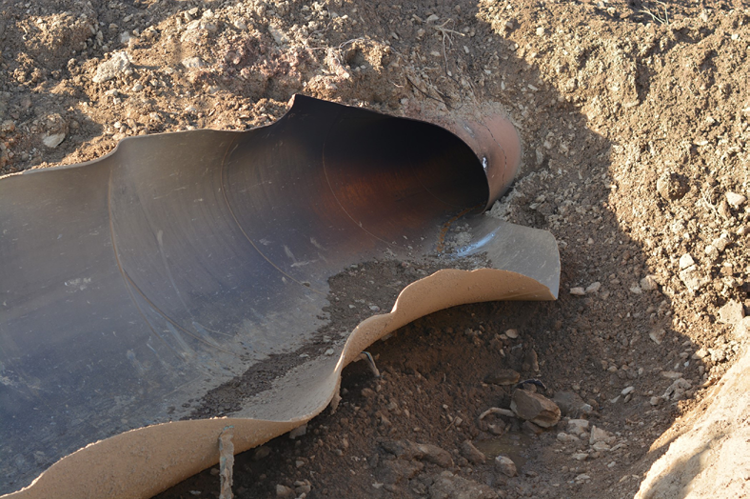Ductile fracture propagation control in modern high strength steel pipeline for transportation of high pressure natural gas with H2 and CO2 contents: arrest requirements evaluation by numerical tool and full-scale testing verification

One of the most severe accidents which could occur in a gas transmission pipeline involves the linepipe wall failure and subsequent fracture initiation, which may evolve in a long running fracture propagation if the material toughness properties are not adequate. The most acknowledged approach for ductile fracture propagation assessment is the Battelle Two Curve Method (BTCM), which has been developed in the ‘70s for gas transmission pipelines, validated against hundreds of experimental tests over the last decades and now incorporated in international standards and recommendations such as ISO, API and DNV-GL.
RINA, on behalf of Sinopec Petroleum Engineering Corp. (SPE), performed a full-scale burst test in the framework of the Xinjiang Coal-to-Gas Delivery Pipeline Project on a pipeline transporting coal gas containing H2 and CO2 impurities. In addition, a state-of-the-art tool has been developed which applies the BTCM and provides valuable inputs for pipeline design engineers in terms of minimum material toughness for having an arrest, as a function of initial pressure and temperature, gas composition, pipeline geometry and material grade.
The present paper shows the theoretical and experimental activities carried out on ductile fracture arrest topic and the main software features. Software predictive capabilities are discussed together with suggestions on proper correction factor to apply for different pipeline scenarios.
